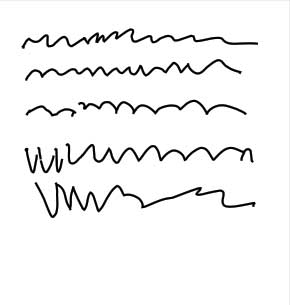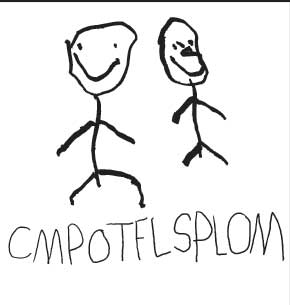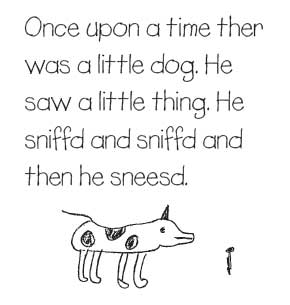Emergent writers discover many ways to send written messages. The writing samples on this page demonstrate different kinds of writing evident in a kindergarten classroom. Each sample demonstrates one or more of the qualities of effective writing.
Drawing and Imitative Writing
In this type of early writing, the child writes a message or shares ideas with others through drawings and imitative writing. Scribbling and random letters are often considered to be an imitation of “grown-up” writing.
The first example here shows individuality. Notice the use of made-up letters to imitate writing.
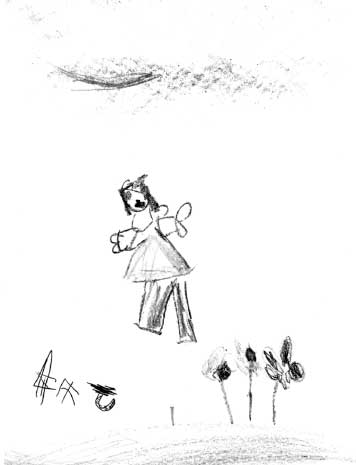
The second example shows an attempt at appropriate formation of letters and words.

Copying Words
In this type of early writing, the child copies words from handy resources like books, posters, and word walls. The writer may or may not be aware of the meaning of the words.
The first sample here shows the child’s ability to use art, form letters, and copy a title from a book. The writing focuses on the topic “My Favorite Story.”

In the second sample, the writer copies a string of unrelated words for the topic “Fishy Words.” The writing shows a beginning use of words and formation of letters.
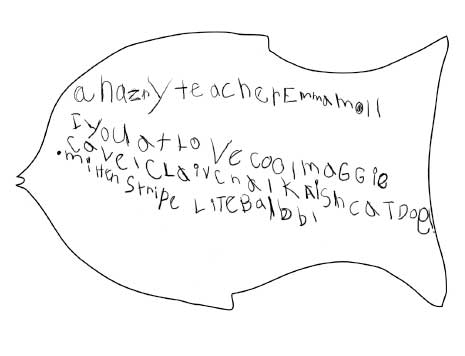
Drawing and Strings of Letters
In this type of early writing, the child writes with random letters but has a definite message to convey. The letters often have no relationship to conventional letter sounds or spelling. (Sometimes a teacher or scribe translates the message into conventional form.)
The writer of the first sample translates her string of letters as “playing with my baby sister.” Through art, the child focuses on the topic. A beginning ability to form letters is shown.
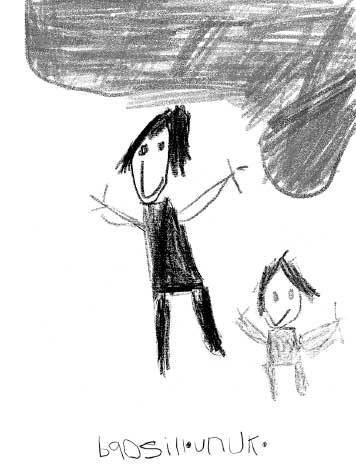
According to the writer of the second sample, the title is “Riding My Bike.” An early attempt at forming letters is shown. The illustration supplies some of the meaning.
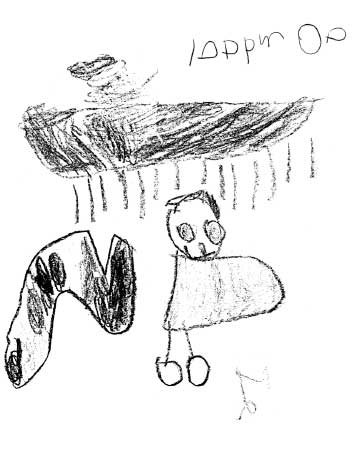
Early Phonetic Writing
In this type of early writing, the child writes connected letters (mostly consonants) to represent words. Sometimes the sound of the letter itself is used for a word; for example, “r” is the word are.
This writing translates as follows: “I ask my dad if he will call a playmate for me.” The writing focuses on a topic and shows an early attempt at writing a sentence.
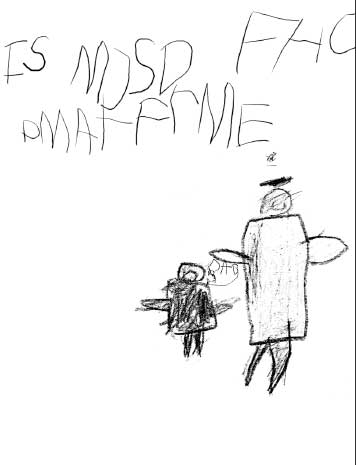
In this sample, symbols and consonant sounds are used to show that the writer loves her dollhouse. This writing displays individuality, an early example of voice.
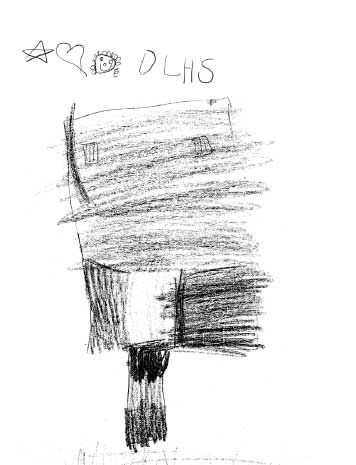
Phonetic Writing
In this type of early writing, the child writes words using letters to represent each sound that is heard. Consonants and vowels are used. Some punctuation may also be used.
This writing focuses on a topic and makes sense. The writer shows an awareness of consonant and vowel sounds and uses words and sentences. The art complements the writing.
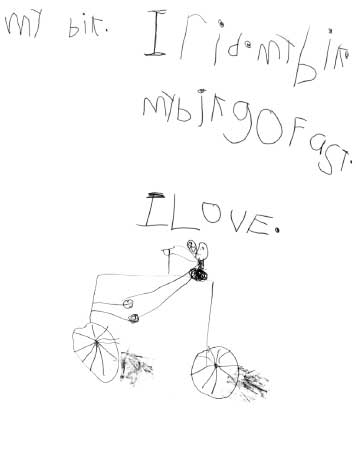
The writer of this sample uses both consonants and vowels to spell words and write a sentence. The art carries details and demonstrates an emerging voice.
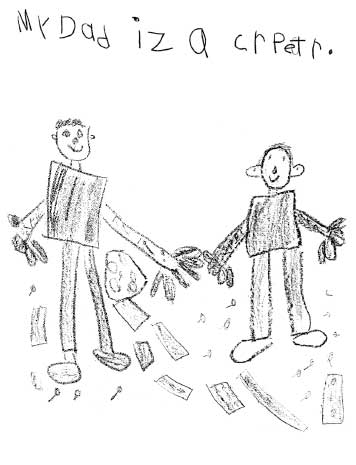
Conventional/Some Phonetic Writing
In this type of writing, the child increasingly writes with conventional spellings and structures. Formation of letters is also more conventional.
This writer focuses on a topic and shows individuality. The writing uses words and sentences appropriately.
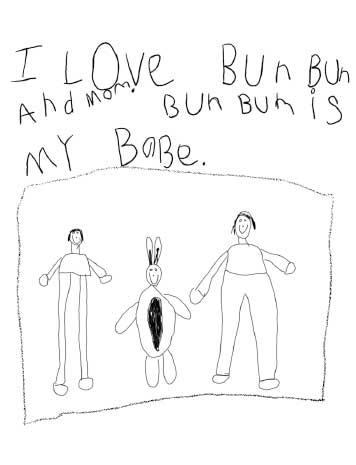
The writer’s message makes sense and shows an understanding of the friendly letter. The writing exhibits the appropriate use of words and sentences.

